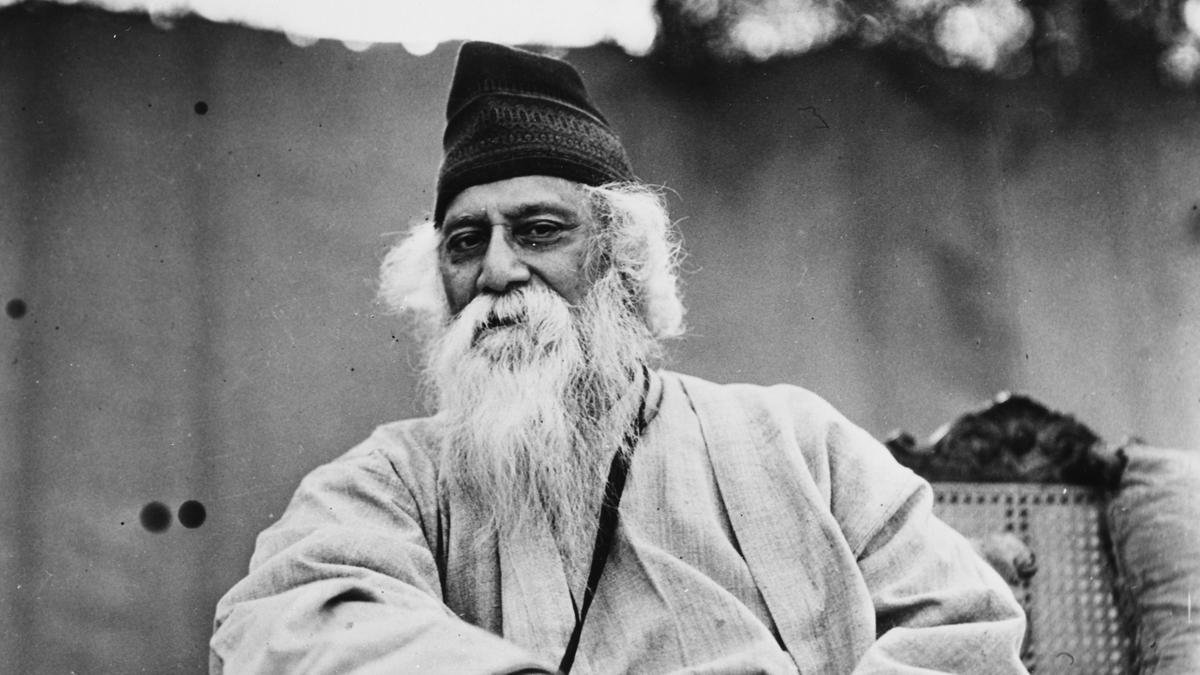The Architect of India’s Indirect Tax Revolution Understanding the Role of the GST Manager

In the sprawling and complex landscape of India’s Goods and Services Tax (GST), a singular GST Manager does not exist in the traditional corporate sense of a CEO or a direct executive head. Instead, the ultimate authority and guiding force behind the nation’s unified indirect tax system is the GST Council. This apex body, a unique example of cooperative federalism, is entrusted with the monumental task of formulating policies, setting rates, and resolving disputes related to GST.
At the very pinnacle of the GST Manager Council, playing the role of its most influential “manager” and driving force, is the Union Finance Minister of India. As of today, June 17, 2025, this crucial position is held by Smt. Nirmala Sitharaman. Her leadership and vision are central to the direction and evolution of GST, impacting every business, manufacturer, and consumer across the country.
This comprehensive article will delve into the multifaceted role of the Union Finance Minister as the de facto “GST Manager,” exploring the structure and functions of the GST Council, the challenges and triumphs under her stewardship, and the profound impact of this leadership on India’s economic trajectory.
The GST Manager Council A Federal Masterpiece
To truly understand the “GST Manager,” one must first appreciate the constitutional body they lead: the GST Council. Established under Article 279A of the Constitution of India, the GST Council is a joint forum of the Centre and the States. Its very existence is a testament to the spirit of cooperative federalism, where both levels of government collaborate to ensure the smooth functioning of a unified tax system.
Structure of the GST Council
The GST Council is a 33-member body, meticulously designed to ensure representation and consensus:
- Chairperson: The Union Finance Minister of India. (Currently, Smt. Nirmala Sitharaman)
- Members (Centre): The Union Minister of State in charge of Revenue or Finance.
- Members (States): Ministers in charge of Finance or Taxation, or any other Minister nominated by each of the 28 states and 3 Union Territories with legislatures (Delhi, Puducherry, and Jammu & Kashmir).
- Vice-Chairperson: The state members elect one amongst themselves to be the Vice-Chairperson.
- Ex-Officio Secretary: The Secretary (Revenue) to the Government of India.
- Permanent Invitee (Non-Voting): The Chairperson of the Central Board of Indirect Taxes and Customs (CBIC).
This carefully balanced structure ensures that both central and state interests are represented and considered in every decision.
Key Functions of the GST Council
The mandate of the GST Council is expansive and covers all critical aspects of GST implementation and evolution. Its key functions include:
- Recommendations on Tax Rates: Determining the GST rates for various goods and services, including setting floor rates and special rates for specific circumstances (e.g., natural calamities).
- Exemptions and Threshold Limits: Deciding which goods and services will be exempted from GST and setting the turnover thresholds for mandatory GST registration.
- Model GST Laws and Rules: Formulating the foundational laws, principles of levy, apportionment of Integrated GST (IGST) on inter-state transactions, and procedural rules for registration, return filing, and payments.
- Special Provisions: Recommending special provisions for certain states, particularly those with unique economic or geographical considerations (e.g., North Eastern states, Himachal Pradesh).
- Dispute Resolution Mechanism: Establishing a mechanism for settling disputes arising from the recommendations of the Council or their implementation between the Centre and states, or among states.
- Review and Monitoring: Continuously reviewing the performance of GST implementation, monitoring compliance, and recommending corrective measures.
- Inclusion/Exclusion of Goods: Deciding on the inclusion of petroleum crude, motor spirit, high-speed diesel, natural gas, and aviation turbine fuel within GST at a future date.
Decisions within the Council are not unilateral. They are taken by a majority of not less than three-fourths of the weighted votes of the members present and voting. The Central Government’s vote carries a weightage of one-third, and the combined votes of all state governments carry a weightage of two-thirds. This unique voting mechanism underscores the collaborative nature of the GST Manager regime.
The Union Finance Minister: The Primary Architect and Steward
While every member of the GST Council contributes, the Union Finance Minister, as the Chairperson, plays the most significant role, effectively acting as the GST Manager. This leadership position carries immense responsibility and influence:
1. Setting the Agenda and Guiding Discussions:
The Union Finance Minister chairs all meetings of the GST Council. This involves setting the agenda for these crucial deliberations, ensuring that all pressing issues are brought to the table. By guiding the discussions, the Chairperson facilitates consensus-building among members with diverse economic and political interests. This requires exceptional negotiation skills and a deep understanding of fiscal policy. The discussions are often intricate, involving trade-offs between revenue buoyancy, ease of doing business, and social equity. The Chairperson’s ability to steer these complex conversations towards a mutually agreeable outcome is paramount.
2. Balancing Central and State Interests:
Perhaps the most challenging aspect of the Union Finance Minister’s role is balancing the often-divergent interests of the central government and individual states. States rely heavily on their share of GST Manager revenue, and decisions on rates, exemptions, and compliance can have significant financial implications for them. For instance, a reduction in GST rates on certain goods might boost consumption but could also lead to a temporary dip in state revenues. The Chairperson must navigate these complexities, striving for solutions that are equitable and beneficial for the entire nation, while respecting state autonomy. This involves intense deliberation, often behind closed doors, to forge a path that serves both fiscal federalism and national economic goals.
3. Driving Policy Reforms and Simplification:
The GST regime is a living document, constantly evolving to address new challenges and enhance ease of doing business. The Union Finance Minister is the driving force behind proposed policy reforms, such as rate rationalization, simplification of compliance procedures, and addressing issues like inverted duty structure. They often initiate studies, consult with industry bodies, and present solutions to the Council to streamline the system. This proactive approach is crucial to ensure that GST remains dynamic and responsive to the needs of a rapidly evolving economy. For example, the push for mandatory e-invoicing for lower turnover businesses or the ongoing discussions around the Goods and Services Tax Appellate Tribunal (GSTAT) establishment are direct results of this reform-driven mindset.
4. Ensuring Revenue Stability and Economic Growth:
A primary objective of GST Manager is to ensure stable and buoyant tax revenue for both the Centre and the States. The Union Finance Minister, in their capacity as the GST Council’s head, monitors revenue collections, analyzes economic trends, and makes strategic recommendations to optimize the tax base. This directly impacts the government’s ability to fund development projects, manage public debt, and maintain overall fiscal health. The consistent growth in GST collections, even amidst global economic uncertainties, is a testament to the effectiveness of the system under the Council’s guidance.
5. Interfacing with Stakeholders:
The Union Finance Minister frequently engages with various stakeholders, including industry associations, trade bodies, tax professionals, and the general public. These interactions provide valuable feedback on the ground realities of GST implementation, helping to identify pain points and inform future policy decisions. This consultative approach is vital for ensuring the tax system remains responsive to the needs of the economy and minimizes unintended consequences. Regular pre-budget consultations and post-Council meeting press conferences are key platforms for this engagement.
6. Advocating for India on the Global Stage:
As the head of India’s indirect tax system, the Union Finance Minister also represents India’s GST interests on international forums. They articulate India’s perspective on global taxation trends, share insights from India’s GST experience (which is often studied by other developing economies), and contribute to the broader discourse on international tax cooperation and global best practices. This enhances India’s standing in the global economic arena.
Smt. Nirmala Sitharaman Steering the GST Ship
Currently, Smt. Nirmala Sitharaman, as the Union Finance Minister, holds the mantle of the GST Council’s Chairperson. Her tenure, which began in May 2019 and continued post-election in June 2024, has been marked by several significant developments and continued efforts to refine the GST architecture.
Under her leadership, the GST Council has:
- Successfully managed the initial teething troubles and the COVID-19 economic shock: The early years of GST implementation were fraught with challenges, including technical glitches, compliance issues, and industry adaptation. Smt. Sitharaman, along with the Council, worked to address these swiftly through continuous clarifications, procedural relaxations, and technical improvements to the GSTN portal. During the unprecedented economic disruption caused by the COVID-19 pandemic, the Council, under her guidance, took crucial decisions to provide relief measures, extend deadlines, and rationalize rates for essential goods, demonstrating its agility and responsiveness.
- Prioritized Rate Rationalization: The long-standing discussions on simplifying the multiple GST slabs have gained momentum under her leadership. The goal is to move towards fewer, more streamlined rates, reducing classification disputes and making the tax structure more efficient. This is a complex exercise, balancing revenue implications with industry demands, and reflects a commitment to long-term systemic improvement. While a complete overhaul is still a work in progress, gradual adjustments are consistently being made.
- Pushed for Deeper Digitalization and Automation: The continued push for e-invoicing for a wider range of businesses and the mandatory implementation of multi-factor authentication are testaments to her commitment to a technologically advanced and secure GST ecosystem. These measures aim to enhance transparency, curb evasion, and improve ease of compliance, ushering in an era of data-driven tax administration. The integration of e-way bills with e-invoices further strengthens this digital backbone.
- Addressed Inverted Duty Structure (IDS) and ITC Blockages: While IDS remains a challenge for certain sectors, the Council under her guidance has periodically reviewed and attempted to rectify such imbalances, particularly where they significantly impact specific manufacturing segments and lead to blocked input tax credit. Efforts have also been made to streamline the refund process for accumulated ITC, especially for exporters, to improve working capital cycles.
- Maintained Revenue Growth and Enhanced Compliance: Despite global economic headwinds and the impact of the pandemic, GST collections have shown remarkable resilience and consistent growth. This is a reflection of improved compliance, a widening tax base, and effective administration, all nurtured under the Council’s oversight. The focus on data analytics and intelligence-based enforcement is paying dividends in driving higher collections.
- Focused on Ease of Doing Business: The various procedural simplifications, extended deadlines, and the introduction of schemes like the Quarterly Return Monthly Payment (QRMP) scheme for smaller taxpayers reflect a consistent effort to make GST compliance less burdensome, especially for MSMEs.
Her approach has often been characterized by a blend of firmness in maintaining fiscal discipline and responsiveness to genuine industry concerns. She has consistently emphasized the need for a stable and predictable tax regime to foster economic growth and attract investment, both domestic and foreign.
Challenges and Future Outlook
Even with a dedicated GST Manager at its helm, the GST system continues to face challenges. These include:
- Further Rate Rationalization: The journey towards a truly simplified rate structure is ongoing and will require continued deliberation and consensus-building among states. Striking the right balance between simplicity, revenue adequacy, and equity will be key. The ongoing discussions about merging slabs or shifting items between them will dominate future Council meetings.
- Addressing Sector-Specific Issues: Certain sectors still face unique challenges under GST, requiring tailored solutions and continuous engagement. The complexities of sectors like real estate, petroleum, and alcohol (currently outside GST’s ambit) present significant future policy considerations.
- Enhancing MSME Compliance and Digital Literacy: While efforts have been made, ensuring seamless GST compliance for the vast number of MSMEs remains a priority, requiring continued simplification, educational initiatives, and improved digital infrastructure access, especially in remote areas.
- Combatting Evasion: As the system matures, the focus on advanced data analytics, artificial intelligence, and intelligence-based enforcement to combat tax evasion will intensify. Measures like the proposed “Track and Trace Mechanism” for evasion-prone commodities indicate a proactive stance towards ensuring compliance and widening the tax net.
- Strengthening Dispute Resolution: The establishment and effective functioning of the Goods and Services Tax Appellate Tribunal (GSTAT) are crucial to reduce the burden of litigation on higher courts and provide faster resolution for taxpayers. This will be a key focus in the coming years.
- Global Competitiveness: As India aims to become a global manufacturing and export hub, the GST regime will need to continually adapt to ensure Indian businesses remain competitive on the international stage. This includes ensuring efficient refund mechanisms and a stable, predictable tax environment.
The role of the Union Finance Minister as the GST Manager will remain pivotal in navigating these challenges. Their ability to foster cooperation within the GST Council, articulate a clear vision, and implement pragmatic solutions will determine the future trajectory of India’s indirect tax system. The goal is to evolve GST into an even more efficient, transparent, and growth-friendly tax regime that supports India’s ambition of becoming a developed nation and a global economic powerhouse.
In essence, while there isn’t a single individual formally designated as the GST Manager, the Union Finance Minister, currently Smt. Nirmala Sitharaman, embodies this critical leadership role within the robust and collaborative framework of the GST Council. Her responsibilities extend far beyond mere tax collection; they encompass the strategic direction, equitable implementation, and continuous evolution of a tax system that is fundamental to India’s economic progress.









